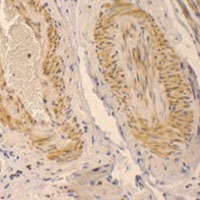 Smart Citations
Smart CitationsSee how this article has been cited at scite.ai
scite shows how a scientific paper has been cited by providing the context of the citation, a classification describing whether it supports, mentions, or contrasts the cited claim, and a label indicating in which section the citation was made.
Immunohistochemical identification of resistin in the uterus of ewes subjected to different diets: Preliminary results
Resistin is a polypeptide hormone of the adipokine-family, primarily, but not exclusively, produced by the adipose tissue. Recent studies suggested that resistin may affect the male and female reproductive activity. The study aim was to immunohistochemically evaluate the presence and distribution of resistin in the ovine uterus. Uterine samples were collected from two groups of ewes at the end of an experimental trial during which the animals of the first group (CTRL) were fed only by grazing while those of the second one (EXP) were supplemented with barley and corn. Using a monoclonal antibody against resistin, tested by Western Blot, the immunopositive reaction was identified in the cytoplasm of epithelial lining cells and uterine glands. The endogenous production of resistin seemed to be affected by different diet, as evidenced by staining differences between the CTRL and EXP groups. Our findings support the existence of a peripheral resistin system in the sheep uterus. It is possible that this system is involved in the functionality of the uterus, which is also affected by the animal’s nutritional status.
How to Cite
PAGEPress has chosen to apply the Creative Commons Attribution NonCommercial 4.0 International License (CC BY-NC 4.0) to all manuscripts to be published.








